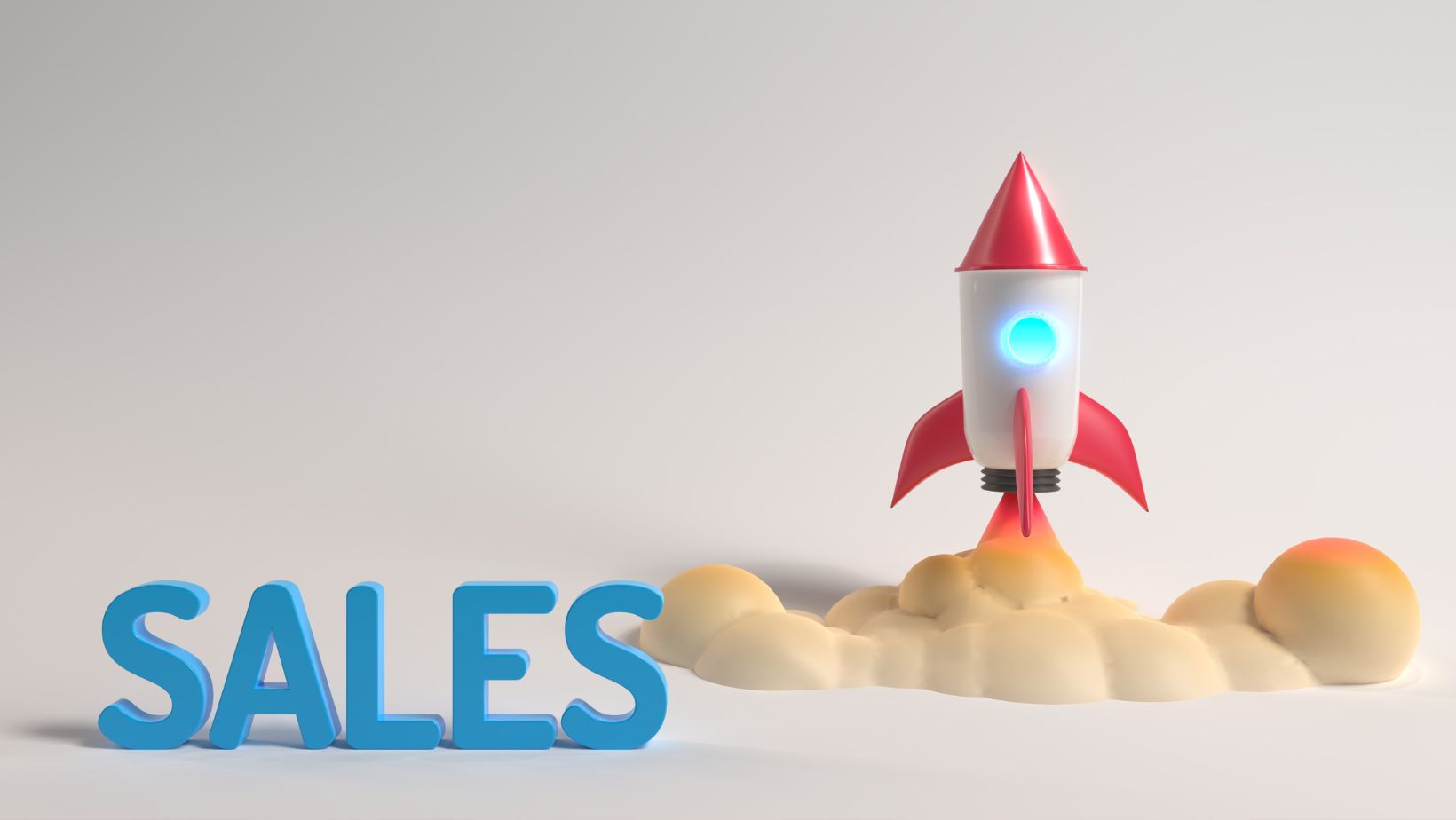
What drives business growth? Having an exceptional product or service matters. But even the best offering only takes flight with an effective sales engine powering its success.
This is where meticulously enabling your sales crew precisely what they require to excel across the entire sales lifecycle becomes mission-critical.
Welcome to sales enablement, the strategic process of delivering on-demand knowledge, content, tools, and insights to boost sales conversations, accelerate deal cycles, and maximize revenue growth.
This comprehensive guide will illuminate sales enablement for transforming average performers into all-star closers, smashing goals!
Why Sales Enablement is Essential
The following are the key reasons you MUST make sales enablement consultant help central toward accomplishing revenue growth:
Accelerates Sales Productivity
Efficient salespeople accomplish more in less time. Enablement clears obstacles to daily efficiency by aligning tools, tactics, and territories for optimized time management.
Improves Win Rates
Your team wins more deals when equipped with enablement resources that match the competition. Shared intelligence on customer pain points, common objections, and proven rebuttals provides the competitive edge for convincing buyers to choose you over rivals.
Enhances Customer Satisfaction
Knowledge and confidence translate into superior service. Enabled sales teams personally delivering exemplary experiences to forge lasting buyer relationships and industry authority.
Reduces Onboarding Time
Instead of wasting months finding their feet, new hires trained through enablement content and mentors contribute faster without extended ramp-up time.
Tightens Sales and Marketing Alignment
Enablement brings consistency in messaging, tools, and platforms across sales and marketing, preventing mixed signals to buyers. Close coordination amplified through enablement means higher conversions.
Properly enabling your crew gives them superpowers, amplifying results at every step while accelerating pipeline velocity!
Key Ingredients of Successful Sales Enablement
While enablement priorities may differ across industries and business models, several fundamental components working in tandem drive stellar execution:
Content Strategy
From one-pagers to in-depth reports, collateral-equipping teams answering buyer questions need matching against each stage of the decision journey. Content channels engagement while conveying value.
Sales Training
Formal workshops build knowledge; microlearning sustains it. Needs-based sessions unlocking product mastery, objection handling, prospecting techniques, and presentation expertise translate into business wins.
Coaching and Mentoring
Veteran guidance during live selling scenarios provides the secret sauce for responding dynamically to any buyer situation.

Expert coaching cements skills learned during off-the-job training into habits deployed instinctively.
Technology and Tools
CRM, contract automation, and the tech stack, which are amplifying productivity, need continuous evaluation against enablement priorities, balancing pragmatism and features.
Metrics and Analytics
If it doesn’t get measured, it doesn’t get managed. Tracking key performance indicators via insightful dashboards illuminates fine-tuning needs while spotlighting high flyers for team replication.
How to Get Started with Enablement
Driving enablement takes careful coordination. Follow these field-tested steps to launch your enablement engine effectively:
Audit Existing Sales Processes
Kickoff by documenting current protocols across lead response protocols to account management workflows. What collateral is shared? How are objections resolved? Where are knowledge or data gaps? Detail strengths and weaknesses while identifying tactical needs per sales stage.
Set Goals and Objectives
Given audit findings, define targets for sales cycle compression, larger deal sizes, expanded renewals, etc., and rep competency requirements per profile matching growth ambitions. Get agreement with sales leadership first before rollout.
Build Content Foundation
Catalog existing playbooks, one-pagers, presentations, and FAQs against questions buyers ask per vertical during decision journeys. Determine initial content gaps delaying or derailing deals that updated collateral addressing objections can resolve.
Formalize Training Initiatives
Develop onboarding programs that impart product, competitive, negotiation, and technical mastery through engaging workshops. Help reps know features and communicate value around buyer pain points.
Review Tools Stack
Examine the technology arsenal, including CRM, sales enablement portals, contract lifecycle management, etc., ensuring seamless workflows and accessibility and advancing deals without tedious administration bogging things down.
Track and Optimize
Monitor content consumption trends, seller readiness surveys, and sales cycle analytics to uncover what works and requires rework. Win/loss analysis provides additional clues into strengthening enablement components. Continuous optimization balancing various inputs elicits exponential returns as the multiple facets of enablement coalesce into a high-performance revenue engine.
Expanded Scope of Sales Enablement
While core tenets remain consistent, enablement expands in scope as ambition grows, taking teams to higher tiers of sales effectiveness, such as:
On-Demand Access
Making enablement assets available anytime across devices via well-organized content portals removes delays from disjointed data scattered across email threads and shared drives, stifling seller productivity and buyer conversations.
Ongoing Microlearning
Short-burst e-learning sustains continual competency elevation through snack-sized modules, unlocking product refinements, strategic revisions, and tactical best practices across teams and preventing skill erosion between lengthier training sessions.
Advanced Analytics
Crunching activity metrics, surveys, and CRM data unearth additional visibility into usage trends down to asset/topic levels, informing content priorities per seller strengths across micro-verticals. Drill-down dashboard analysis prevents assumptions from guiding decisions.
Competency Testing
Assessing grasps of core concepts and tactical proficiencies through engaging quizzes and scenario analyses uncovers specific gaps needing reinforcement. Certifications confirming readiness provide motivation milestones.
Vertical Viewpoints
Enrich industry insights by sharing perspective advisories from a network of field experts who survey market evolutions, emerging adoption drivers, future trajectories, and competitive landscape navigations to attune strategies.
Needs-Matched Mentoring
Custom-tailored seller coaching journeys by veterans streamline applying enablement theory into practice through personalized progress plans, ride-along sessions, and goal-focused chats addressing specific skill-building areas.
Ongoing innovation exploring expanded potential sustains enablement’s value, elevating your team’s capabilities and meeting new challenges, scaling summit after summit.
Choosing the Ideal Enablement Consultant
Implementing enablement requires skillfully aligning multiple interconnected components into a high-performance revenue engine that is humming perfectly.
Finding the right specialist partner willing to dig beyond surface concepts requires assessing certain vital factors:
Depth of Expertise
Mastery of principles alone cannot substitute for proven hands-on enablement implementation exposure accrued guiding various sales teams hands-on through the execution gauntlet accounting for inevitable real-world variables and mid-course corrections. The ideal partner possesses deep scarring earned shepherding enablement wins.
Clear Communication Skills
Regardless of qualifications, the effectiveness gets severely bottled if guidance lacks coherence for audiences lacking intimate enablement context.

Can your prospective consultant break down intricate interdependencies into simplified actions using terminology everyone grasps? Assessing clarity prevents confusion downstream.
Demonstrable Outcomes
While impressive credentials make for great LinkedIn bragging, can your prospective partner conclusively showcase quantifiable enablement impact accelerating revenue growth specifically for past clients? Verify track records moving the needle on bottom-line metrics aligning with your growth goals.
Flexibility and Agility
Sales vary across verticals, so rigid, formulaic frameworks demanding exhaustive customization delay value realization and exhaust budgets fast. Ensure your partner demonstrates adaptability, molding fluid programs around your existing sales architecture for accelerated wins sans unnecessary service fees.
Cultural Alignment
Beyond technical qualifications, confirm philosophical approaches resonate regarding transparency, collaboration, accountability, and urgency through values that uphold your organizational standards.
Vetting consultants check all boxes, reducing guesswork so your crew enjoys the full benefits of enablement without the pitfalls or expenses of missteps.
Conclusion
Getting sales enablement right makes the difference between modest gains and market dominance. While foundational tenants stay consistent globally, impeccable localized application-adjusting approaches matching unique sales team dynamics, vertical nuances, and existing stack capabilities unlock exponential returns beyond generic, cookie-cutter templates.
Carefully layer mutually reinforcing enablement building blocks – hyper-relevant content, channeled coaching, fine-tuned technology tools, always-on microlearning, etc. but remain flexible in adapting supports and prioritizing customer alignment. By empowering your sellers through tailored knowledge, insightful buyer perspectives, and real-time mastery boosts, enablement fuels sustainable competitive advantage as the ultimate sales force multiplier, delivering impressive business growth year after year.










